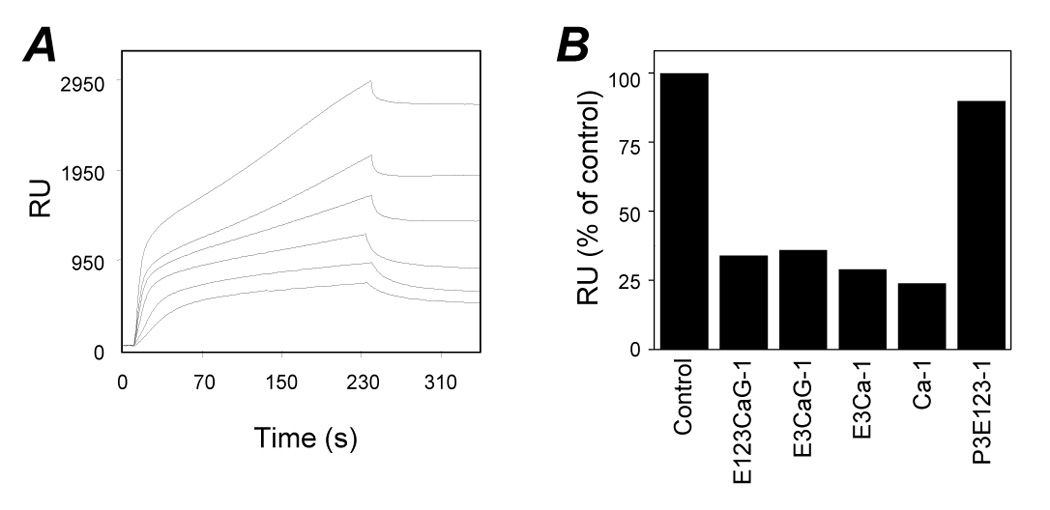Figure 4.

Real time biomolecular studies of FGF-2 interaction with TSP-derived peptides. A) Overlay of blank-subtracted sensograms showing the binding of FGF-2 (1400, 1120, 840, 560, 280 and 140 nM from top to bottom) to immobilized E123CaG-1. B) Competition assay. FGF-2 was loaded onto the BIAcore CM5 sensorchip containing immobilized E123CaG-1 in the absence or in the presence of the indicated TSP-1-fragment (1.5 µM). Data are the percentage of FGF-2 bound to the sensorchip at the equilibrium in the absence of any competitor. Experiments were done in calcium-free buffers.
